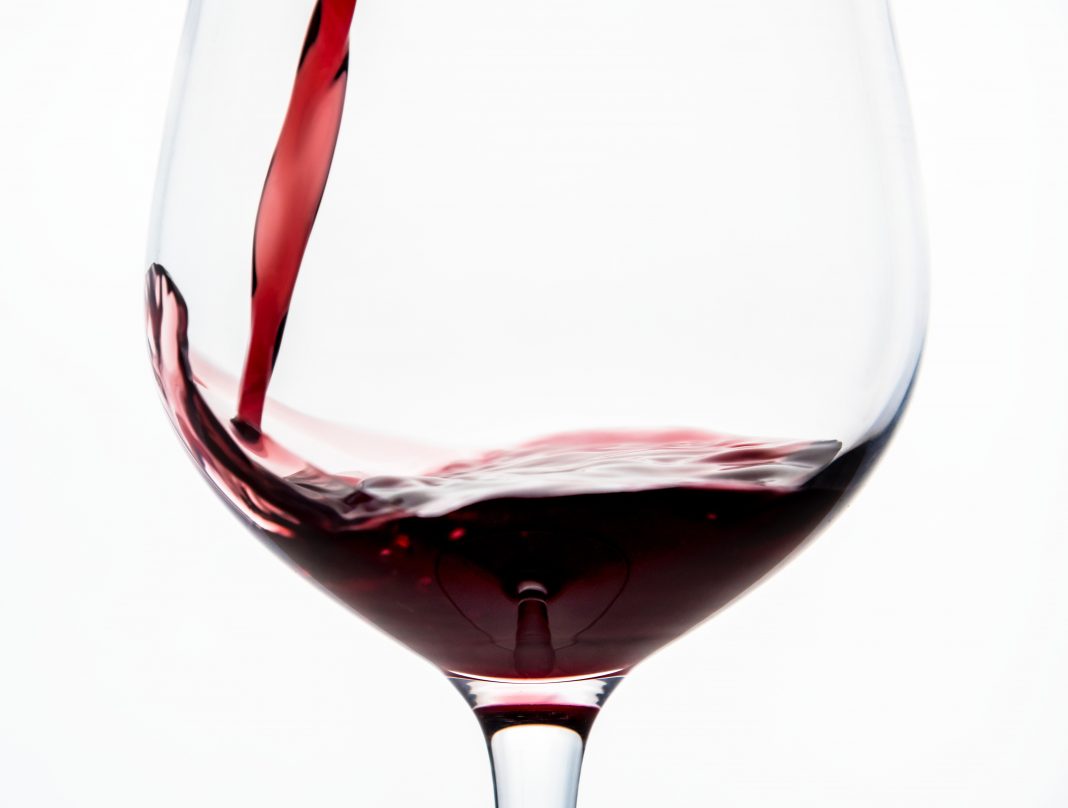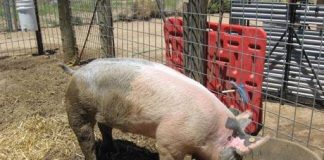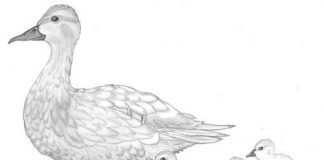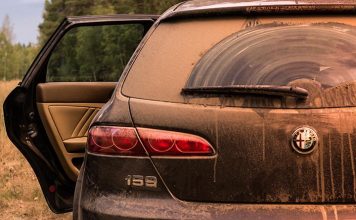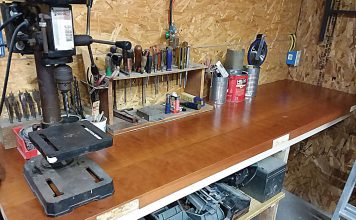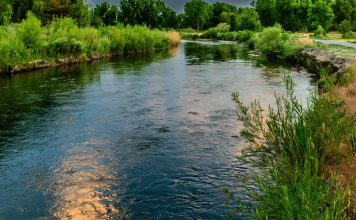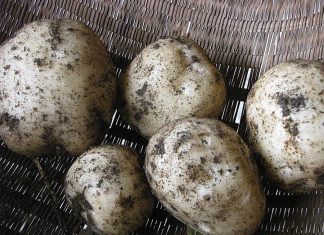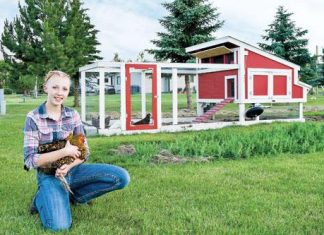| Issue #110 • March/April, 2010 |
I love wines. Always have. I’ve drunk wine, studied wine, written about wine, and collected wine.
But I got tired of hearing my back-to-nature friends chide me by saying, “Oh. You buy your wine. How sad.”
Enough was enough. So I took the plunge, bought a wine-making kit, and started experimenting making my own wines. Some were disasters but some were downright good.
But I was still taken to task by my friends. “Making your wines from varieties of grape concentrate is only one step away from buying them in a store,” they admonished.

“Well, stomping a vat full of fresh grapes with my bare feet just ain’t gonna happen,” I shot back.
They laughed and handed me a glass of a golden-colored wine. It was delicious but unlike any other kind of wine I had tasted before. Turned out to be dandelion wine. Yep, those yellow-flowered plants called “weeds” that litter lawns and supposedly ruin them. Those same plants whose leaves I’d been eating in my salad for years.
And so began a new direction in my wine drinking and wine makingalternatives to grape-based wines. I learned about fruit wines (like apple, strawberry, pineapple, and elderberry), flower wines (like dandelion, hibiscus, lavender, and broom flower), vegetable wines (beet, pea pod, potato, and pumpkin), grain wines (wheat, rice, barley, corn), herb wines (parsley, comfrey, parsnip, and rosemary), and finally, wines few would ever have considered (garlic, green tea, acorn or oak leaf, even coffee).
While many may sound quite odd, I have found most to taste good to unbelievably great.
And they’re not hard to make, often from ingredients found in your backyard, garden, or pantry.
Types of wine
Non-grape wines, known as “country wines” or even “something wines,” and other alcoholic beverages also enjoy a long history, some even older than their grape cousins. For example, archeological evidence of clay pot residues confirms that the inhabitants of a Neolithic village in Jiahu, Henan province, in Northern China, were drinking what is now considered the oldest “brew” known, a mix of rice, honey, and fruit, about 9,000 years ago! That beats out the archeological evidence for the oldest grape wine found in Iran by 1,600 years.
Sake, known as “rice wine,” is a drink we associate with Japan, but its history extends far beyond just Japan. Rice wine is said to have originated in China in 4,000 BC.
And some fermented beverages are shrouded in the curtain of history. For example, ancient Mongolia and what we now call Central Asia, have a traditional mildly alcoholic drink called koumiss (or kymys) made from fermented mare’s (or cow’s or even camel’s) milk.
And native Indians of South America make chicha, an alcoholic beverage derived from the root of the yucca (cassava) plant.
But the general consensus is that the oldest fermentable drink is mead, which is defined as any alcoholic beverage that uses honey as its primary sugar base. In fact, iQhilika is an African (Xhosa) word for mead. It is thought that cave paintings in South Africa show the drinking of iQhilika was a part of this ancient culture of the San (bushmen) which, if correct, suggests the use of non-grape wine at least 25,000 years ago.
More recent traditions, however, show that over the centuries non-grape wines were well-developed in European countries like Spain, France, Germany, and especially England. Even the Romans, who are credited with developing grape wines to a high level, were quite fond of their violet flower wine.
There is also a very strong tradition of medicinal wines, both Asian and European. Medicinal wines are an important component of traditional Chinese medicine, while in ancient Europe, the medieval German abyss, mystic, and healer, St. Hildegard of Bingen, prescribed parsley wine to improve blood circulation and aid heart conditions.
But in both traditions, medicinal wines often were already-made wines in which herbs or other ingredients were then steeped, which is not quite the same thing as wine made from herbs or other ingredients. But the process of steeping ingredients in already-made wines continues even today, especially for culinary herb wines used in a variety of recipes. By the way, herbed wines are a great alternative to herbed vinegars, are quick and easy to create, and make great gifts.
Yeast and the process
The primary reason for a divergent growth between grape and non-grape wines comes down to one elementyeast. Grapes are naturally endowed with everything needed to ferment, including sugars, juices, pectins, and most importantly, yeast. Basic grape wine can be made by mashing fresh grapes, leaving the mash to ferment in a warm environment, and then straining off the pulp.
Non-grape wines need to have yeast added to the mash to induce the fermentation process. Even plain bread yeast will do, but it tends to be finicky and produces a rather “heavy” tasting wine. Better to choose a wine yeast that has been especially created for the fermenting of wine.
But the basic process for non-grape wines is fundamentally the same as for grape wines. Start with a 5-10 gallon pail (non-metal, either glass, plastic, or earthenware). Pour your ingredients, i.e. fruit, herbs, grain, etc., into the pail, add about a gallon of boiling water, add sugar or honey (as required and in the amount specified per your recipe) and stir with a long wooden or plastic spoon. Note that many recipes call for adding a campden tablet at this point. A campden tablet will sterilize the mixture, inhibiting the growth of both bacteria and molds.
Allow the mixture, now called must, to cool for 24 hours and add your yeast. Cover the must with cheesecloth and let sit in a warm place for about ten days (again, as specified in your recipe), stirring at least once daily.
After waiting the required number of days, strain the must and pour the liquid portion into a sterilized glass jug, filling it almost to the top. The idea is to allow as little oxygen in the jug as possible. Cap the jug with a fermentation lock, a device that allows carbon dioxide (a gas produced by fermentation) to escape while keeping oxygen (which limits fermentation) from entering.
Keep the jug in a warm environment and watch the bubbles for about six weeks. When the bubbles stop, it means the sugars have all been consumed and the yeast has died. It also means it’s time to rack, or siphon off, the fermented wine with a plastic hose into another glass bottle, called an aging vessel. Let it sit until it clears, and then again siphon off the wine into wine bottles. Cork the bottles, label them, and then lay them sideways into a wine bottle rack.
Leaving them in the bottle can take from one month to two years and even longer, as most wines improve with age.
While there are many variations to the above wine-making process, they are usually more “tweaking” the process than effecting any major changes. Experimenting is half the fun of it.
The other fun part is recalling the memories inherent in each bottle of wine while sipping a glass of it. Remembering how you and your kids went foraging for the berries or fruits on a gorgeous summer afternoon, or the morning that you and your spouse went searching for that herb patch and got lost. Or, having given away as many tomatoes as you could, you’re still left with a few bushels that you know you’re never going to eat and then the idea comes along, “Let’s make wine with it!”
So, remember the everlasting words of Virgil “Vinum et musica laetificant cor” or “Wine and music gladden the heart.”
So be glad and have a glass of homemade wine!
Fruit wines
Mandarin orange wine
(Makes 1 gallon)
Ingredients:
1 pint of freshly squeezed orange (Mandarin) juice
2½ lbs. white cane sugar
6½ pints water
½ tsp. pectic enzyme (an enzyme to digest fruit pectins which leave wines cloudy)
1 tsp. yeast nutrient (a “vitamin pill” for yeast, assuring ALL required nutrients)
1 Campden tablet (crushed)
1 pak wine yeast (Chablis)
fining agent (an agent that removes sediment and helps to clarify, leaving the wine with a brilliant appearance)
cheesecloth
Steps:
1. Remove seeds or peel from juice (they can make the wine bitter).
2. Add juice, water, yeast nutrient, and crushed Campden tablet to a glass, plastic, or earthenware container.
3. Stir in sugar until completely dissolved.
4. Cover and let stand for 24 hours.
5. Dissolve pectic enzyme into mash (per manufacturer’s instructions).
6. Let stand an additional 12 hours.
7. Add yeast and cap container with fermentation lock.
8. Allow fermentation to begin and continue until bubbling stops.
9. Optional: Another crushed Campden tablet can be added at this point.
10. Rack the wine. Racking may need to be repeated once or twice to insure no residue remains. (A little water can be added to bring up the level to a gallon.)
11. Add fining agent (clarifier).
12. Allow to sit for 4-6 months before bottling.
13. You can sweeten the wine (to taste) before bottling (if you do sweeten, be sure to add ½ teaspoon potassium sorbate to prevent fermentation re-starting).
14. Bottle and let age a minimum of 6 months.
Spiced wild apple wine
(Makes 1 gallon)
Ingredients:
6 lbs. wild apples (mixed tart and sweet best)
1 gallon water (boiling)
½ cup cold water
3 lbs. white cane sugar
1 lemon
½ tsp. ground cloves
½ tsp. ground nutmeg
1 cinnamon stick
12 allspice berries, crushed
1 vanilla bean
1 Campden tablet, crushed
1 pak wine yeast (Chanson)
1 tsp. yeast nutrient
½ tsp. pectic enzyme
fining agent
cheesecloth
Steps:
1. Wash, core and quarter apples. (Keep an eye open for worms!)
2. Chop apples fine or run through a food chopper.
3. Pour chopped apples in a glass, plastic, or earthenware container.
4. Pour in 1 gallon boiling water.
5. Add sugar and stir until dissolved.
6. Peel the lemon thinly, put rind into a saucepan, add ½ cup water. Bring to boiling and boil 10 min. Add mix to mash.
7. Add crushed Campden tablet.
8. Combine spices and tie in square of cheesecloth. Suspend spice bag in rack jug.
9. Let mash cool for 24 hours.
10. Dissolve pectic enzyme into mash (per manufacturer’s instructions).
11. Let stand an additional 12 hours.
12. Add wine yeast and yeast nutrient.
13. Cover with cheesecloth and let stand for 10 days.
14. Rack wine, removing spice bag* and top off with apple juice if needed.
15. Let ferment for approximately 6 weeks or until bubbling stops.
16. Rack again.
17. Add fining agent and let sit in aging jug for 6-12 months, sampling after 6 months.
18. Ready to bottle or drink.
*NOTE: Some winemakers choose to leave the spice bag in the wine while it is fermenting and then remove it during the second racking. Try it both ways and see what you like better.
Vegetable wines
Beet wine
Makes for a strong wine but it takes a while to come into its own. Also, so as nothing is wasted, you can pickle the beets after they’re cooked. (Makes 1 gallon.)
Ingredients:
3-4 lbs. small beets
approx. 5 qts. water
3 lbs. sugar
2 lbs. brown raisins
1 lemon, sliced
1 orange, sliced
1 Campden tablet, crushed
1 pak wine yeast (Assmanshausen is a good choice.)
1 tsp. yeast nutrient
½ tsp. pectic enzyme
fining agent
cheesecloth
Steps:
1. Wash beets thoroughly.
2. Put beets into kettle and add water. Boil for 1½ hours.
3. Pour off liquid portion into glass, plastic, or earthenware container.
4. Add sugar, crushed Campden tablet, raisins, lemon, and orange slices.
5. Let cool for 24 hours.
6. Dissolve pectic enzyme into mash (per manufacturer’s instructions).
7. Let stand an additional 12 hours.
8. Add wine yeast and yeast nutrient.
9. Cover with cheesecloth and let stand for 15 days.
10. Rack into ferment jug and let ferment for 3-4 months, racking additionally as needed, until clear.
11. Add fining agent during last rack.
12. Bottle and age at least 6 months. Better 12.
Potato wine
(Makes 1 gallon)
Ingredients:
3 lbs. potatoes
3 qts. water
4 lbs. sugar
4 oz. light raisins, chopped
2 lemons
2 oranges
1 Campden tablet, crushed
1 pak wine yeast (Prise de Mousse is a good choice.)
1 tsp. yeast nutrient
½ tsp. pectic enzyme
fining agent
cheesecloth
Steps:
1. Clean potatoes, scrubbing thoroughly. Do NOT peel but cut away bad spots and “eyes.”
2. Grate potatoes.
3. Place into saucepan, add water, heat, bringing to boil and then simmer, skimming surface until nothing further rises to the top, approx. 15-20 minutes.
4. Strain potatoes, putting the liquid into glass, plastic, or earthenware container.
5. Add sugar and raisins to container.
6. Grate outer rinds of lemons and oranges. Add to container.
7. Juice lemons and oranges and add to container.
8. Add Campden crushed tablet
9. Let stand for 24 hours.
10. Add wine yeast, yeast nutrient, pectic enzyme, and orange juice to the must.
11. Cover with cheesecloth and let stand for 7 days.
12. Rack and let stand open for 10 days.
13. Rack again and add fermentation lock.
14. Allow to ferment until bubbles cease.
15. Bottle and let age 6 months.
Herb wines
Parsley wine
(Makes 1 gallon)
|
Ingredients:
2 oz. dried parsley
1 oz. dried mint
½ oz. dried sage
1 gallon water
2 oranges, quartered
2 lemons, quartered
3 lbs. sugar
1 pak wine yeast (California Champagne)
cheesecloth
Steps:
1. Put herbs and fruit into a glass, plastic, or earthenware container.
2. Pour ¾ gallon boiling water into container.
3. Add 1½ lbs. sugar to container, stirring until dissolved.
4. Let cool to room temperature and add wine yeast.
5. Cover with cheesecloth and let ferment for 10 days.
6. Rack.
7. Boil 1 qt. of water and add remaining 1½ lbs. sugar.
8. Let cool and then add to racked wine.
9. Cover with fermentation lock and continue to ferment for 6 months.
10. Rack additionally as needed.
11. Bottle and let age at least 4-6 months.
Rose hip wine
(Makes 1 gallon)
Ingredients:
3 lbs. rose hips
2 lbs. sugar
1 gallon water
1 pak wine yeast (California Champagne)
Steps:
1. Wash rose hips well and crush or chop them.
2. Pour ¾ gallon boiling water into glass, plastic, or earthenware container.
3. Add 1½ lbs. sugar to container, stirring until dissolved.
4. Let cool to room temperature and add wine yeast.
5. Cover with cheesecloth and let ferment for 7 days.
6. Rack.
7. Boil 1 qt. of water and add remaining ½ lb. sugar.
8. Let cool and then add to racked wine.
9. Cover with fermentation lock and continue to ferment until bubbles stop.
10. Rack additionally as needed.
11. Bottle and let age at least 2-3 months.
Grain wines
Rice and raisin wine
(Makes 1 gallon)
Ingredients:
2 lbs. whole raisins (not chopped)
2 lbs. rice, washed
2 lbs. sugar
juice of 1 lemon
juice of 1 orange
2 whole star anise
1 long cinnamon stick, broken into 4 pieces
wine yeast (Pasteur Champagne)
1 gallon water
cheesecloth
Steps:
1. Dissolve the sugar in 1 pint boiling water and let cool.
2. Put raisins, rice, and juices into glass, plastic, or earthenware container.
3. Add spices.
4. Add cooled sugar solution and 6 pints of lukewarm water.
5. Add yeast.
6. Cover with cheesecloth and let ferment for 14 days, stirring daily.
7. Rack, adding fermentation cap.
8. Continue to ferment until bubbling ceases.
9. Rack again.
10. Wine is now ready to be drunk and is good for 2 months.
|
Other wines
Green tea metheglin
(Makes 1 gallon)
Ingredients:
2 level tsp. green tea (good quality rolled leaf)
3 lbs. honey (wildflower best)
1 Campden tablet, crushed
1 tsp. pectic enzyme
1 tsp. lemon juice
1 pak wine yeast (Montrachet)
1 tsp. yeast nutrient
Steps:
1. Pour a little boiling water over the tea.
2. When the leaves unfurl, add 1½ quarts (6 cups) boiling water.
3. Cover and steep for 1½ minutes ONLY.
4. Strain into glass jar and cover.
5. Put honey into saucepan.
6. Add equal volume of water and simmer for 15 minutes, skimming off any foam.
7. Combine honey water and green tea into a glass, plastic, or earthenware container.
8. Add crushed Campden tablet, pectic enzyme, and lemon juice to container.
9. Let stand 24 hours.
10. Add wine yeast, yeast nutrient, ½ cup honey to 1 cup warm water, let stand 2-3 hours and add to container.
11. Cover with cheesecloth and let ferment for 10 days.
12. Rack, adding cooled, boiled water to top off as necessary and cap with fermentation lock.
13. Let stand for 12 months, racking as needed.
14. Bottle and let age at least 6 months.


